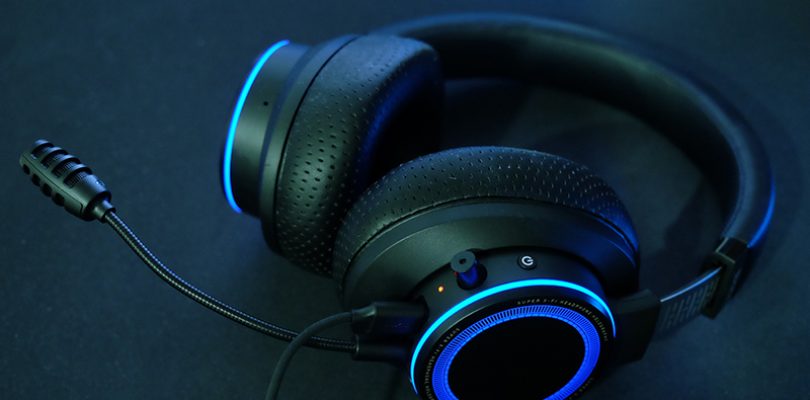When the heyday of multichannel home cinema began in the late 1990s, triggered by the expansion of DVD, we could hardly imagine that two decades later, neuroscience was going to be a very valuable ally of our audio equipment,keep reading review for more information.
Dedicated multichannel sound systems, those that incorporate at least six speakers in 5.1 configurations, do not need it, but when installing so many speakers is a problem, this scientific discipline is of great help in reducing the distance that separates discrete multichannel equipment from those who resort to virtualization of surround sound.
In some ways, this technology is a gimmick. One very elaborate and with a scientific substrate that, when implemented correctly, try to trick our brain into believing that there is a sound source in a location in space where, in reality, there is no loudspeaker. But it works. These Creative headphones prove it.
We’ve tested them thoroughly, and the way they recreate surround sound is surprisingly satisfying. As we are about to see, they shine with film and video games, but this is just one of the qualities these SXFI Theaters are a winning bet.
Creative SXFI Theater: Technical Specifications
These headphones have been designed primarily for us to use when we watch movies and spend our leisure time playing video games, so your comfort zone is not the street; it is inside our house.
This use scenario has meant that Creative has not equipped them with active noise cancellation, although, yes, their circumaural coupling manages to offer us a reasonably high level of isolation from ambient noise. Two more brushstrokes about its architecture: they use a closed space and incorporate an electrodynamic speaker.
The circumaural coupling of these electrodynamic transducer headphones provides a reasonably high level of isolation from ambient noise.
In the description of this SXFI Theater, this brand confirms that the magnet that is responsible for controlling the excursion of the diaphragm of each earphone is neodymium, a chemical element that is frequently used to manufacture permanent magnets for good quality speakers due to its high quality. Field intensity.
Its frequency response coincides with what is traditionally considered the audible spectrum (in practice, our hearing capacity is more limited), so it ranges between 20 Hz and 20 kHz. However, like most headphone manufacturers, Creative does not tell us its total harmonic distortion rate, so we have no choice but to get carried away by what our hearing system tells us.
Before proceeding further, we are interested in stopping for a moment on one of the star ingredients of these headphones. Together with them, Creative gives us a USB wireless transmitter that works in the 2.4 GHz band and implements a proprietary connection protocol.
This link aims to minimize the latency of the sound as much as possible, something important both when we watch a movie and when we enjoy a video game, and we can use it when we use as a source a Windows PC, a Mac, a Sony PlayStation 4, a PlayStation 5 or a Nintendo Switch.
Its finish has room for improvement, but its ergonomics are at a good level.
The finish of these headphones has left me the same taste in my mouth as the SXFI Carrier soundbar that I had the opportunity to review a few days ago: not bad, but it has a very clean room for improvement. From a construction point of view, your Achilles heel, in my opinion, is the polycarbonate that Creative has used in the manufacture of the enclosure of each earpiece. It does not measure up to the other elements of these headphones because it conveys a certain fragility, and it is a shame, especially if we do not overlook that these SXFI Theater are not a bargain (officially, they cost 200 euros).
Fortunately, I liked the ear pads much more than their plastic. They are covered in an extremely soft synthetic leather that is a delight to the touch, but the most important thing is that they adapt very well to the contour of our face, which allows them to distribute the pressure homogeneously. In addition, they are easily cleaned using a non-abrasive cloth. And, while I haven’t been able to test these headphones long enough to find out if the ear pads are durable, I’d bet that if they are treated reasonably carefully, they should keep them looking good for a long time.
Creativesxfial pads
The diadem
a is lined with the same soft leatherette that Creative has used for the ear cushions, and again I think it was a good idea to use this material. The pressure distribution on our skull is uniform, although the headband seems a bit narrow to me. If it had been slightly wider, the surface in contact with our head would be greater, and the sensation of pressure would be less. Still, the ergonomics of these headphones hardly suffer as they are reasonably light (they weigh 339g when we don’t have the removable mic installed and 346g with it).
In the following detailed photo, we can see the connectors and physical controls installed in the enclosure of the left earphone. We have the necessary USB-C charging port, the 3.5 mm jack that allows us to deliver an analog audio signal to the headphones, the removable microphone connector, a button to activate the Super X-Fi technology (we will investigate in her in the next section of the review), the volume potentiometer, a button to deactivate the microphone, and, finally, the on/off button. At first, it is a bit difficult to identify each button without removing the headphones, but you get hold of them straight away without effort.
This is how Super X-Fi technology works, the sauce of these headphones.
Creative, like other headphone manufacturers, has developed its surround sound virtualization technology. Its purpose is to recreate an immersive soundstage capable of immersing us in the action of our movies and video games, but saying it is much easier than doing it. No matter how advanced the holographic sound technique is that the engineers of this and other companies develop, the best and most immersive option will always be to be placed in the sweet spot of discrete multichannel equipment in 5.1 configuration, or even, with an even more ambitious topology, such as 7.1.2.
The algorithm that Creative engineers have developed seeks to adapt the recreation of the sound scene to the characteristics of our auditory system.
It seems important to me to make this reflection to place everything that we will see next in the proper context. However, before continuing, I suggest you look at the article that I link here if you want to know how it is possible to use neuroscience to make the virtualization of the surround sound of these headphones and other devices more immersive and reliable.
The first thing we must do before using this SXFI Theater for the first time is to install the ‘SXFI App’ application on our smartphone, which is available for iOS and Android. When starting it, an assistant will explain to us that he needs to take a photograph of each of our ears and the third snapshot of our face to map the contour of our head and the shape of our ears. In theory, the sound processing algorithm that Creative engineers have developed uses this information to tailor the recreation of the sound scene to the characteristics of our particular auditory system.




